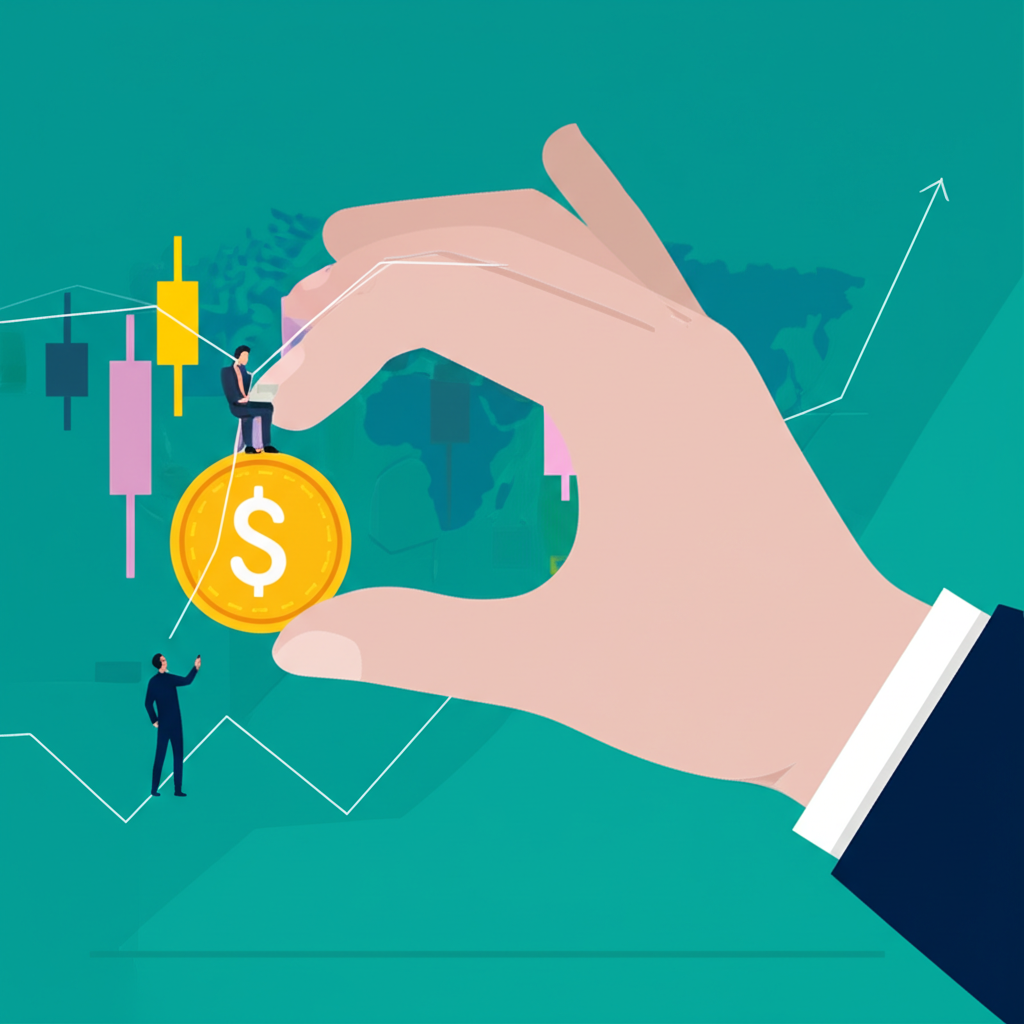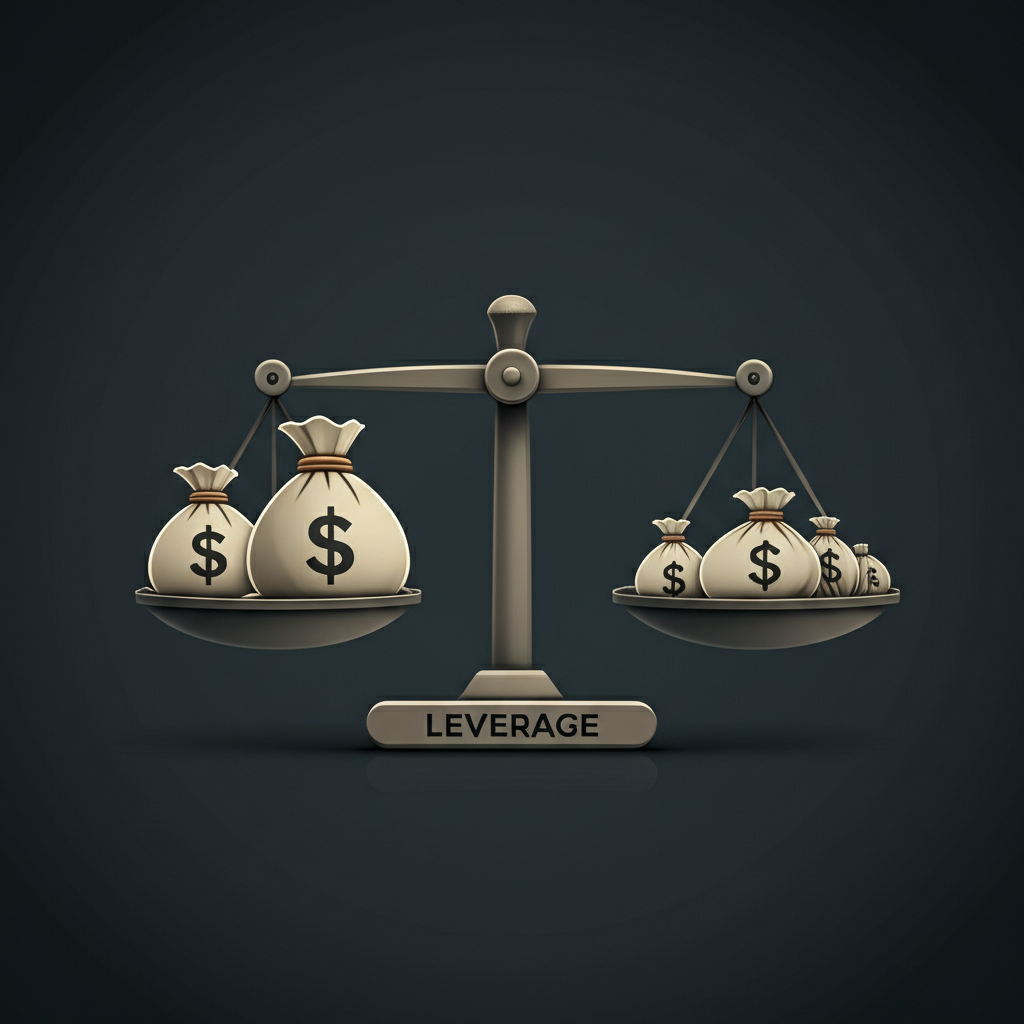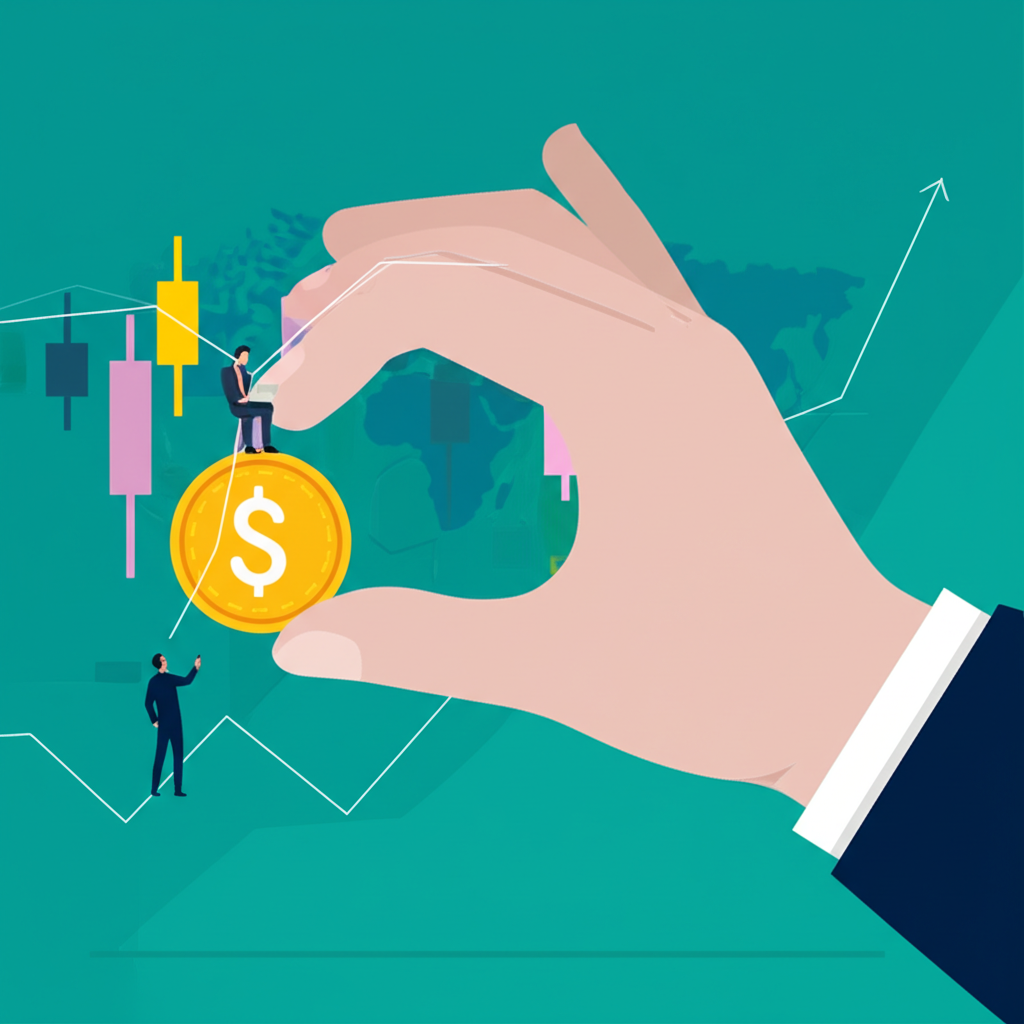Introduction to CFD Trading Leverage
Contract for Difference (CFD) trading has become a widely adopted method for traders seeking to speculate on financial markets without owning the underlying assets. At the core of this approach lies a powerful mechanism known as leverage—a tool that enables traders to gain exposure to large market positions using only a fraction of their own capital. Unlike traditional investing, CFDs allow participants to benefit from both rising and falling prices, offering flexibility across stocks, indices, commodities, forex, and even cryptocurrencies. However, the real game-changer in CFD trading is leverage, which amplifies both gains and losses, making it one of the most critical concepts for anyone involved in this space.

Leverage works by allowing traders to borrow funds from their broker to open a position larger than their initial deposit. This borrowed capital increases market exposure, meaning even minor price movements can lead to significant returns—or equally substantial losses. Because of this dual nature, understanding how leverage functions, its implications, and how to manage associated risks is not just helpful—it’s essential for long-term success. This guide breaks down CFD leverage in practical terms, covering its mechanics, benefits, dangers, and the regulatory frameworks that shape its use around the world.
What is CFD Leverage and How Does It Work?
Defining Leverage in CFD Trading
In simple terms, leverage in CFD trading is the ability to control a large position in the market with a relatively small amount of personal capital. Think of it like using a down payment to buy a house: you don’t need to pay the full price upfront, yet you still benefit from any increase in value. In the context of CFDs, if you want to take a position worth $50,000 and your broker offers 1:50 leverage, you only need to deposit $1,000 of your own money. The remaining $49,000 is provided by the broker, effectively allowing you to trade with borrowed capital.

This mechanism makes CFD trading accessible to a broader range of investors, including those with limited capital. However, while leverage increases potential rewards, it also increases the speed and severity of losses. A small adverse movement in price can result in disproportionately large losses relative to the initial deposit. This is why leverage is often described as a double-edged sword—one that demands respect, discipline, and a clear strategy.
The Mechanics of Leveraged CFD Trading
The process of using leverage in CFD trading follows a structured sequence. When opening a position, traders are required to deposit a portion of the total trade value, known as the margin. The broker then covers the rest, enabling full exposure to the market. For example, with 1:30 leverage, every dollar in your account can control $30 worth of an asset. This multiplier effect is what gives CFDs their appeal, especially in fast-moving markets.

Here’s how it works step by step:
- Select an Asset: Choose a financial instrument such as a stock, index, currency pair, or commodity.
- Determine Position Size: Decide how many units or contracts you want to trade based on your market outlook.
- Calculate Margin: Based on your broker’s leverage ratio, compute the required margin. For instance, a $10,000 position with 1:20 leverage requires a $500 deposit ($10,000 ÷ 20).
- Open the Trade: Commit your margin to initiate the position. The broker finances the remainder.
- Market Moves: As the asset’s price changes, your profit or loss is calculated based on the full position value—not just your initial deposit.
- Close the Position: Once you exit the trade, any gains or losses are settled in your account.
The key takeaway here is that while your capital at risk is limited to your margin, your exposure—and thus your potential outcomes—are tied to the full value of the position. This amplification lies at the heart of leveraged trading and underscores the importance of risk awareness.
Understanding Margin: The Cornerstone of CFD Leverage
Initial Margin vs. Maintenance Margin
Margin is the foundation upon which CFD leverage operates, and it comes in two primary forms: initial margin and maintenance margin. The initial margin is the upfront deposit needed to open a leveraged trade. It represents a percentage of the total position size and varies depending on the asset and leverage offered. For example, with 1:10 leverage on a $10,000 position, the initial margin required would be $1,000.
The maintenance margin, on the other hand, is the minimum equity level that must be maintained in your account to keep a position open. It acts as a safety buffer for the broker in case the market moves against you. If your account balance falls below this threshold due to losses, your broker will issue a margin call, requiring you to either deposit more funds or face automatic position closure.
What is a Margin Call and How to Avoid It?
A margin call occurs when your account equity drops below the maintenance margin level. This typically happens during periods of high volatility or when a trade moves sharply against your position. When triggered, the broker will demand additional funds to restore the required margin level. Failure to respond can lead to forced liquidation of your positions, often at unfavorable prices and resulting in realized losses.
To protect yourself from margin calls, consider the following strategies:
- Monitor Account Levels: Regularly review your available equity and margin requirements, especially during active market hours.
- Set Stop-Loss Orders: Automatically close trades at predetermined levels to limit downside risk.
- Avoid Over-Leveraging: Resist the temptation to use maximum leverage on every trade, particularly if it puts a large portion of your capital at risk.
- Maintain a Capital Buffer: Keep extra funds in your account beyond the required margin to absorb unexpected swings.
- Reduce Trade Sizes: Smaller positions require less margin and reduce the likelihood of hitting margin thresholds during drawdowns.
By maintaining disciplined account management, traders can significantly reduce the chances of facing a margin call—even in turbulent markets.
The Benefits and Risks of Trading with CFD Leverage
Advantages: Amplified Returns and Capital Efficiency
One of the most compelling reasons traders turn to leveraged CFDs is the potential for amplified returns. Because profits are calculated on the full position size, even small price movements can generate outsized gains relative to the capital invested. For example, a 2% increase in a $50,000 position yields $1,000 in profit. If that position was opened with just $1,000 of your own money (using 1:50 leverage), your return would be 100%—a far greater outcome than non-leveraged trading could offer.
Beyond profit potential, leverage also enhances capital efficiency. Instead of tying up large amounts of money in a single trade, traders can use a fraction of their funds and allocate the rest elsewhere. This flexibility allows for better portfolio diversification and improved liquidity management. For retail investors, this means access to markets like forex, indices, and commodities that might otherwise require substantial capital to enter meaningfully.
Disadvantages: Magnified Losses and Increased Risk
While the upside of leverage is attractive, the risks are equally pronounced. Just as gains are magnified, so too are losses. A 2% decline in the same $50,000 position would result in a $1,000 loss—again representing a 100% loss of the initial $1,000 margin. In extreme cases, losses can exceed the initial deposit, especially if stop-loss protections are not in place or if slippage occurs during rapid market moves.
Psychological pressure is another often-overlooked risk. High leverage can lead to emotional decision-making, such as holding losing trades too long or chasing quick profits without proper analysis. Additionally, leveraged positions held overnight are subject to financing charges, also known as swap fees. These costs accumulate over time and can erode profits, particularly in longer-term trades. Market gaps—common during news events or after market closures—can also trigger sudden margin calls and forced exits, sometimes leaving traders with larger losses than anticipated.
CFD Leverage Ratios and Practical Calculations
Common Leverage Ratios Explained (e.g., 1:10, 1:30, 1:500)
Leverage is expressed as a ratio, such as 1:10, 1:30, or 1:500, indicating how much exposure you get per unit of your own capital. Here’s what these ratios mean in practice:
- 1:10 Leverage: Every $1 of your money controls $10 of the asset. To open a $5,000 position, you need $500 in margin.
- 1:30 Leverage: Each dollar controls $30 in value. A $30,000 position requires a $1,000 deposit.
- 1:500 Leverage: Your capital is multiplied 500 times. A $50,000 position needs only $100 of your own funds.
Higher leverage ratios reduce the amount of capital needed but drastically increase risk. Traders in regulated regions often face lower maximum leverage limits, while offshore brokers may offer extremely high ratios to attract clients. The choice of leverage should align with your trading style, risk tolerance, and experience level—not just what’s available.
Calculating Profit and Loss with Leverage: Step-by-Step Examples
Understanding how leverage impacts your bottom line requires clear calculation. Let’s walk through a real-world scenario:
Scenario: You anticipate a rise in Stock X.
- Current Price: $100 per share
- Units Traded: 100 CFDs
- Total Position Value: $10,000 (100 × $100)
- Leverage: 1:20
Step 1: Calculate Required Margin
Margin = Total Position Value ÷ Leverage
$10,000 ÷ 20 = $500
Step 2: Profit Calculation (Price Rises to $102)
Profit per unit: $2
Total Profit: $2 × 100 = $200
Return on Margin: ($200 ÷ $500) × 100% = 40%
Step 3: Loss Calculation (Price Drops to $98)
Loss per unit: $2
Total Loss: $2 × 100 = $200
Loss on Margin: ($200 ÷ $500) × 100% = 40%
This example shows that while the price moved only 2%, the impact on your margin was a 40% gain or loss—demonstrating the powerful effect of leverage.
CFD Trading Leverage Formula and Calculator Concepts
The core formula for determining margin is straightforward:
Margin Required = (Current Price × Number of Units) ÷ Leverage Ratio
To determine the effective leverage being used in a trade:
Leverage = (Current Price × Number of Units) ÷ Margin Used
CFD leverage calculators simplify these computations by allowing traders to input variables like asset price, position size, and leverage. The tool instantly returns the required margin, potential profit/loss, and pip value for forex pairs. These calculators are invaluable for pre-trade planning, helping traders assess risk exposure and avoid overcommitting capital before entering a position.
Regulatory Landscape of CFD Leverage
Global Regulatory Bodies and Their Impact on Leverage Limits
Leverage availability for retail traders varies widely depending on jurisdiction, driven by financial regulators aiming to protect inexperienced investors from excessive risk. Below is an overview of key regulatory environments and their respective leverage caps:
| Regulatory Body | Region/Country | Typical Max Leverage (Retail) | Notes |
|---|---|---|---|
| ESMA (European Securities and Markets Authority) | EU/EEA | 1:30 for major FX pairs, 1:20 for minor FX/indices/gold, 1:10 for commodities, 1:5 for stocks, 1:2 for cryptocurrencies | Strict limits for retail traders. Professional traders may access higher leverage. |
| FCA (Financial Conduct Authority) | UK | Similar to ESMA (1:30 max for major FX) | Follows ESMA’s lead for retail clients post-Brexit. |
| ASIC (Australian Securities and Investments Commission) | Australia | Similar to ESMA (1:30 max for major FX) | Introduced stricter limits in 2021, aligning with EU. |
| CFTC (Commodity Futures Trading Commission) / NFA (National Futures Association) | US | CFDs are generally prohibited for retail traders. Forex trading has a max of 1:50. | US regulations are among the strictest, disallowing CFDs for retail. |
| FSCA (Financial Sector Conduct Authority) | South Africa | Can be higher (e.g., 1:200, 1:500) | More permissive regulatory environment than EU/UK/AUS. |
For example, a European trader is limited to 1:30 leverage on major currency pairs under ESMA rules, whereas a trader in South Africa might access 1:500 through a locally regulated broker. Some offshore platforms advertise leverage as high as 1:3000, but these often operate outside strict oversight and carry significantly higher counterparty risk. Always verify a broker’s regulatory status before trading.
Varying Leverage Across Asset Classes
Beyond geography, leverage limits also depend on the asset class, reflecting differences in volatility and liquidity:
- Forex CFDs: Typically offer the highest leverage due to deep liquidity, especially for major pairs like EUR/USD.
- Indices CFDs: Moderate leverage is common, as indices represent diversified baskets of stocks and tend to be less volatile.
- Commodities CFDs: Precious metals like gold may allow higher leverage (e.g., 1:20), while energy products like crude oil often have lower limits due to price swings.
- Stock CFDs: Usually capped at lower levels (e.g., 1:5) because individual equities can be highly sensitive to earnings reports or news events.
- Cryptocurrency CFDs: Often restricted to very low leverage (e.g., 1:2) due to extreme volatility, protecting traders from rapid account depletion.
These tiered limits are designed to match risk exposure with the inherent behavior of each asset class, particularly in regulated markets where investor protection is a priority.
Strategies for Managing CFD Leverage Risk
Choosing the Right Leverage Level for Your Trading Style
Selecting an appropriate leverage level is a personal decision influenced by experience, risk appetite, and account size. There is no universal “best” ratio—what works for one trader may be disastrous for another.
- Conservative Traders: May prefer low leverage (e.g., 1:5 or 1:10) to minimize risk and withstand adverse price movements without triggering margin calls.
- Aggressive Traders: Might opt for higher ratios (e.g., 1:50 or more) to maximize returns, but this demands strict discipline and advanced risk controls.
- Account Size Considerations: Smaller accounts are more vulnerable to high leverage; a single losing trade can wipe out the entire balance.
- Market Conditions: High volatility calls for reduced leverage to avoid being stopped out prematurely by noise or gaps.
A practical approach is to start conservatively, gain experience, and gradually adjust leverage as your strategy and confidence evolve.
Essential Risk Management Tools (Stop-Loss, Take-Profit, Position Sizing)
Effective risk management is non-negotiable when trading on margin. Key tools include:
- Stop-Loss Orders: Automatically close a position when losses reach a set level, preventing further downside. This is arguably the most important safeguard in leveraged trading.
- Take-Profit Orders: Lock in gains by closing a trade once a target price is reached, helping avoid emotional decisions when a winning trade reverses.
- Position Sizing: Determine how much to trade based on your risk tolerance. A common rule is to risk no more than 1–2% of your account per trade. For a $10,000 account, that means limiting losses to $100–$200 per trade.
- Risk-Reward Ratio: Aim for trades where potential profit is at least twice the potential loss (e.g., 2:1), improving long-term expectancy.
- Never Risk More Than You Can Afford to Lose: Especially relevant with leverage, where losses can exceed deposits if negative balance protection isn’t active.
Combining these tools creates a structured, disciplined approach that helps traders survive and thrive in the high-pressure environment of leveraged CFD trading.
Conclusion: Leveraging CFDs Responsibly
CFD trading leverage is a powerful financial instrument that offers both opportunity and danger. It enables traders to control large market positions with minimal capital, unlocking access to global markets and the potential for significant returns from small price movements. However, this same power magnifies losses, making it possible to lose more than your initial deposit—especially without proper safeguards.
Successful use of leverage requires a solid grasp of its mechanics, including margin requirements, the risk of margin calls, and the true cost of overnight funding. Equally important is a commitment to disciplined risk management: using stop-loss orders, sizing positions wisely, and staying within your risk tolerance. Regulatory frameworks around the world reflect these dangers, imposing leverage caps to protect retail investors. By understanding these rules and choosing regulated brokers, traders can operate in a safer environment.
Ultimately, leverage should be seen not as a shortcut to wealth, but as a tool to be wielded with knowledge, caution, and respect. With the right mindset and strategies, traders can harness the benefits of CFD leverage while minimizing its inherent risks.
Frequently Asked Questions About CFD Trading Leverage
What is the maximum leverage allowed for CFD trading in different regions like the US, UK, and EU?
In the EU and UK, regulations (ESMA/FCA) typically cap retail CFD leverage at 1:30 for major forex pairs, 1:20 for minor forex/indices/gold, 1:10 for commodities, 1:5 for stocks, and 1:2 for cryptocurrencies. In the US, retail CFD trading is generally prohibited, with forex trading limited to 1:50 leverage. Other regions, such as South Africa or offshore brokers, may offer significantly higher leverage, sometimes up to 1:500 or even 1:3000.
How does a CFD trading leverage formula help calculate potential profits and losses?
The primary formula is: Margin Required = (Current Price * Number of Units) / Leverage Ratio. Once the margin is known, profit/loss is calculated based on the full position value. For example, if you control a $10,000 position with $500 margin (1:20 leverage), a 1% price move ($100) results in a 20% return or loss on your margin. A CFD leverage calculator automates these calculations, helping traders quickly assess capital needs and potential outcomes.
Can you provide a simple CFD trading leverage example, such as how $100 with 10x leverage works?
If you have $100 and use 10x (or 1:10) leverage, your $100 serves as the margin to control a position worth $1,000 ($100 * 10). Your profit or loss will be calculated based on the price movements of this $1,000 position. For instance, a 1% price increase on the $1,000 position would yield a $10 profit, representing a 10% return on your initial $100 margin.
What is the practical meaning of a 1:10 leverage ratio in CFD trading?
A 1:10 leverage ratio means that for every $1 of your own capital (margin) you put up, you can control $10 worth of the underlying asset. This amplifies your market exposure by a factor of ten. To open a position with a total value of $5,000, you would only need to commit $500 of your own funds as margin ($5,000 / 10).
Which brokers offer very high leverage, like 1 to 3000, and what are the associated risks?
Very high leverage ratios like 1:500 to 1:3000 are typically offered by brokers regulated in jurisdictions with less stringent rules (e.g., some offshore entities) or by brokers catering exclusively to professional clients in regulated regions. While appealing for potential returns, the associated risks are extreme. Even tiny adverse price movements can lead to rapid margin calls and losses that can quickly exceed your initial deposit, potentially leading to debt if negative balance protection isn’t in place.
Is CFD trading for beginners advisable with high leverage?
No, high leverage is generally not advisable for beginners in CFD trading. While it offers the allure of amplified profits, it also significantly amplifies losses, making it very easy for novice traders to quickly deplete their capital. Beginners should start with lower leverage (e.g., 1:5 or 1:10) and focus on robust risk management strategies, disciplined position sizing, and thorough market education before considering higher leverage.
What is the full form of CFD, and how does it relate to leverage?
The full form of CFD is “Contract for Difference.” CFDs are financial derivatives that allow traders to speculate on price movements without owning the underlying asset. Leverage is an integral component of CFD trading, as it allows traders to open larger positions than their initial capital would normally permit, thereby magnifying both potential profits and losses based on the difference in the asset’s price between opening and closing the contract.
How can I use a CFD trading leverage calculator to manage my risk exposure?
A CFD trading leverage calculator helps manage risk by providing instant insights into your trade. By inputting the asset’s price, number of units, and desired leverage, it shows you the exact margin required. This allows you to:
- Determine if you have sufficient capital.
- Adjust position size to control your exposure.
- Understand the impact of different leverage ratios on your margin.
- Estimate potential profit/loss scenarios before committing capital.
This proactive approach helps prevent over-leveraging and manage capital effectively.
What are the key differences between trading leveraged CFDs and traditional asset trading?
Key differences include:
- Ownership: With CFDs, you don’t own the underlying asset; you speculate on its price movement. Traditional trading involves buying and owning the asset.
- Leverage: CFDs are inherently leveraged, allowing larger positions with less capital. Traditional trading (e.g., buying stocks) typically involves full capital outlay or much lower leverage (e.g., margin accounts).
- Short Selling: CFDs make it easy to profit from falling markets (short selling) without borrowing the asset. Short selling in traditional markets can be more complex.
- Costs: CFDs typically involve spreads and overnight funding fees, while traditional trading may have commissions and holding costs.
- Regulations: CFD markets often have different regulatory structures and leverage limits compared to traditional stock exchanges.
What are the specific leverage rules for CFD trading on platforms like Trading 212?
Platforms like Trading 212, operating under strict regulations (e.g., FCA in the UK and CySEC in the EU), adhere to the leverage limits set by these bodies for retail clients. This means a maximum of 1:30 for major forex pairs, 1:20 for minor forex/indices/gold, 1:10 for commodities, 1:5 for stocks, and 1:2 for cryptocurrencies. These limits are in place to protect retail traders from excessive risk exposure, aligning with broader European financial regulations.

留言